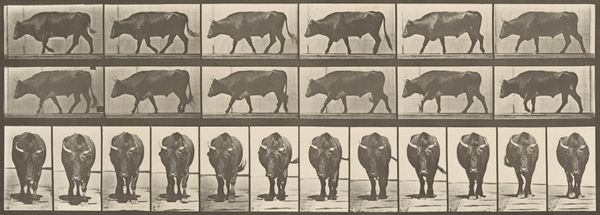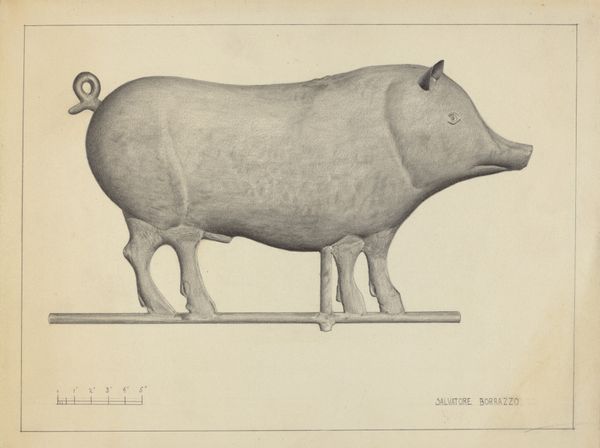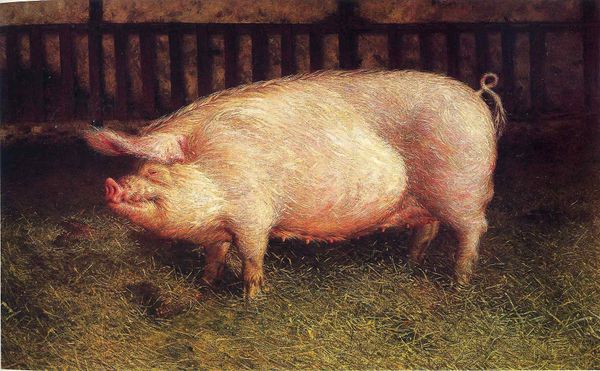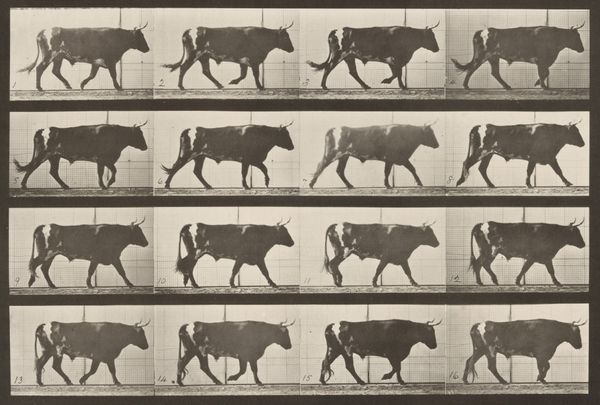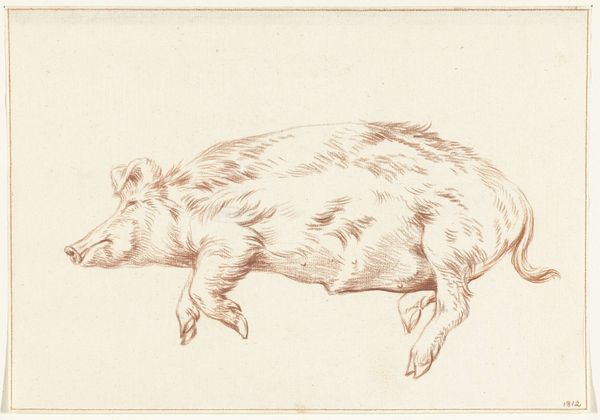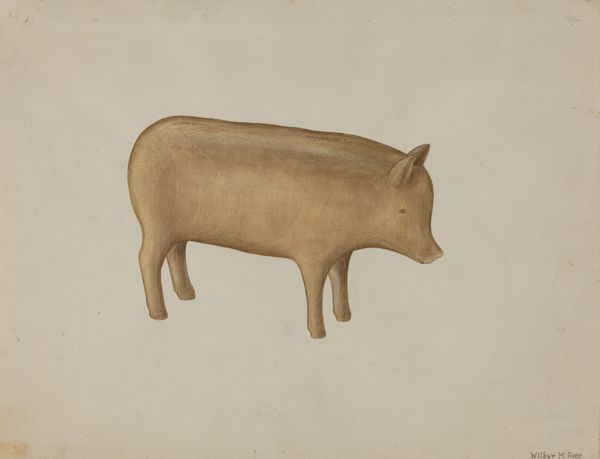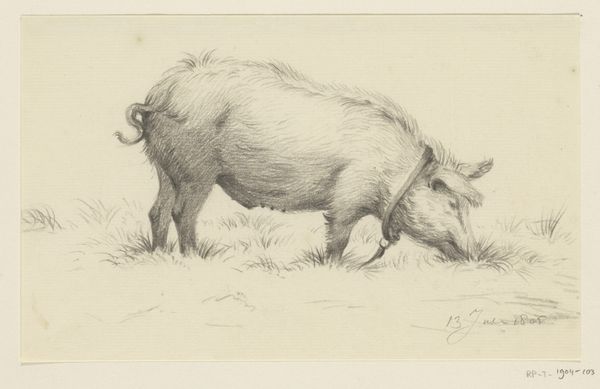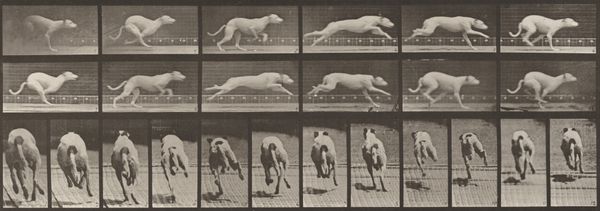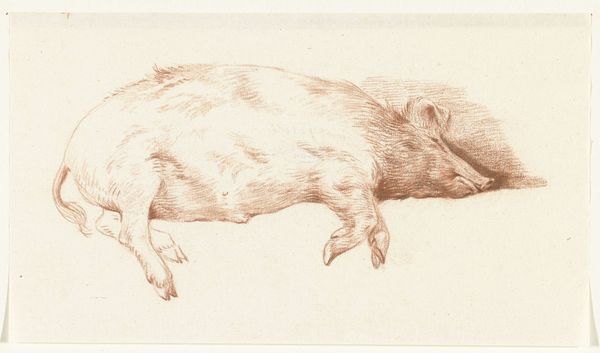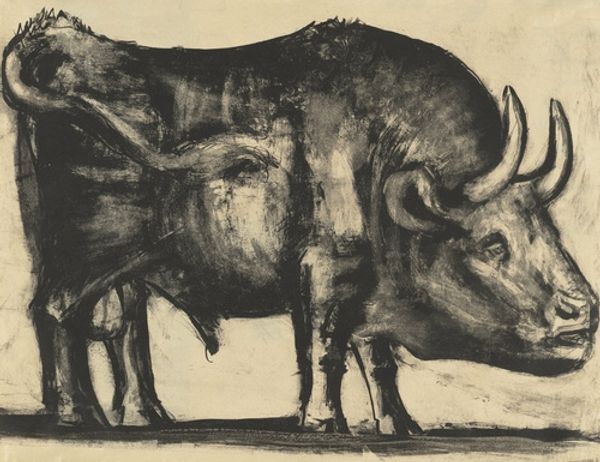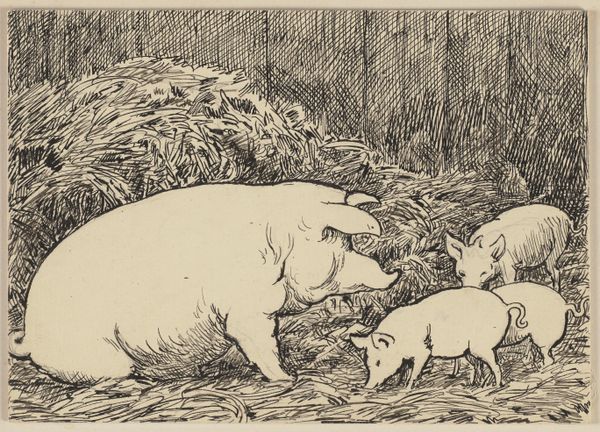
Dimensions: image: 15.4 × 46.2 cm (6 1/16 × 18 3/16 in.) sheet: 47.7 × 60.5 cm (18 3/4 × 23 13/16 in.)
Copyright: National Gallery of Art: CC0 1.0
Editor: Looking at Eadweard Muybridge's "Plate Number 674. Sow; walking," from 1887, I'm struck by the gelatin-silver print and how it methodically captures a pig's gait. It feels almost clinical in its observation. What do you see in this piece beyond the surface? Curator: The genius of Muybridge lies not just in freezing a moment, but in dissecting motion itself through the photographic process. The materiality of photography is critical here: the silver gelatin process allows for this minute breakdown. We can consider the labor involved: setting up the cameras, developing each print. How does this method, rooted in a material reality, impact how we perceive the animal? Editor: I guess seeing the pig in so many sequential images makes it seem less like an individual and more like a subject of scientific study. Is that the point? Curator: Precisely. It pushes the boundaries of both art and science. It reveals the process, exposing how movement can be captured and analyzed through technological means. This piece asks us to think about the photographic process as a form of industrial labor, closely related to contemporary forms of production and the consumerist culture that came to dominate in the late 19th century. Editor: It’s interesting to think about Muybridge as not just an artist but also almost an engineer documenting motion. Curator: Right. And beyond the art world implications, think about the use of these studies for commercial applications! Materially, Muybridge’s photographs highlight the era’s shifting relationships to labor and industry. The photographic materials make such detailed analysis of movement possible, yet conceal the labor invested to produce them, thus commodifying motion and impacting mass visual consumption. Editor: I see now how much the materials and the process itself contribute to the meaning of this work. It is much more than just an image of a pig. Curator: Exactly. Examining Muybridge through a materialist lens deepens our understanding of the relationship between technology, art, labor, and social structures in the late 19th century.
Comments
No comments
Be the first to comment and join the conversation on the ultimate creative platform.
